A lot of people are finding this article based on the search term “UKCPS scam”. It was first published in 2013 and it sees regular spikes in visitor traffic. I saw a surge at Christmas 2018, then there was one in 2019, and – after the break for Covid – another one now in 2022. UKCPS are vultures.
The article timeline is a bit messy as I have added to it several times since the original publication in 2013. However, you can still pick up any information that might help you.
After seeing this story in the newsfeeds I thought I’d mention something that happened to me in late 2013. In fact, I mentioned it in this article back in January of 2014, but there’s a bit of a follow up.
In December 2013, I went to see Status Quo at the new Leeds Arena. I picked up my mate (let’s call him Bob) from his house just outside Leeds and we drove into the City Centre. Bob directed me to the Edward Street car park not far away from the Arena and we parked there. This car park has ANPR cameras that detect your registration number as you drive in, and you have to enter your registration into the ticket machine – if it doesn’t match what the ANPR system picked up you apparently don’t get a ticket. I paid using my debit card (which turned out to be a wise move). There was only one price available at the time from the machine – the £8.50 overnight charge – in spite of a list of hourly tariffs being shown on signs. We arrived at shortly before 6pm and drove out at just after 11pm, where ANPR cameras apparently once again log your exit.
As we walked to the Arena, Bob told me that a few weeks earlier his wife (let’s call her Sarah) had been Christmas shopping and parked in that same car park. A few days later she was stung with a fine for “insufficient fee paid”. Now, Sarah isn’t the kind of person to take things lying down, and in any case she’d kept the receipts proving that she had paid the correct amount. She kicked up a stink and they dropped the charge. It was normal chit-chat, and I didn’t think much of it after that.
I lease my school car and the arrangement is that any traffic fines are automatically paid by the lease agent (most lease companies operate this way, I believe) if an infringement is submitted to them. This avoids the fine escalation if you don’t pay within 14 days. Anyway, in January I got a letter from my lease company informing me that they had paid a fine submitted by UKCPS (United Kingdom Car Parking Solutions). I was spitting feathers (this is another one of the things that can create stress in this job) because I hadn’t done anything wrong.
I immediately wrote an appeal to UKCPS. I also wrote to Leeds City Council, because I didn’t realise at the time that the car park in question was a private one, but all this did was teach me what a bunch of dickheads work there. The Council told me it wasn’t their problem (it seems Leeds has a similar bunch of morons in charge that Nottingham does). I pointed out in my letter to UKCPS that they KNEW I had entered the car park, they KNEW I had left it, and they KNEW how much I had paid. Furthermore, since I’d paid by debit card, my bank statement was proof of how much I’d paid. There was no reply after 20 days. I wrote a further harshly-worded letter demanding a response from them within 14 days, which was not forthcoming. I then phoned them on the number that says not to use it for claims, and they said immediately that they’d refund it. I never had to provide proof of the amount I’d paid, and I eventually got my money back in February.
I stress again that UKCPS KNEW I had paid the right amount. Their ANPR system and ticket machine would tell them that clearly. And they asked for no proof when I phoned them, which suggests they were well aware of enough information – either from my letters that they’d ignored, or via said systems – to immediately admit they were wrong. So it doesn’t take a genius to work out what they were up to, particularly when you consider they’d tried the exact same thing with Bob’s wife. I’m updating this at Christmas 2022 due to a surge in hits, which is further evidence: they try this same scam every year.
In fact, if you Google “UKCPS insufficient fee” – which I did when I appealed – you find that the same scam has been pulled on hundreds, if not thousands, of other innocent members of the public. Take a look at this single link – particularly the reviews on the right-hand side, where most reviewers have had the same scam pulled on them and most appear to have coughed up! The hits that Google throws up are mainly the ones where people have actually tried to do something about it. It’s anyone’s guess how many others have blindly paid up thinking they made a mistake. UKCPS is cashing in on the fact that it knows a significant number of people won’t appeal. So, they’re either scam artists or are so incompetent that they make a lot of “mistakes”.
UKCPS are the sort of vermin who, until the Law changed making it illegal, would have happily clamped everyone who parked in their car park. The Law now needs to change to put these thieving parasites out of business for good. You will note that their (crap and amateurish) website graphics imply that they manage car parking for Tesco, Harveys, and Boots, since these are featured.
And Leeds City Council is just as bad for allowing cowboy operators in their City.
More recently (mid-2016) I had a run of hits on this story. I did a bit more reading and it would appear that UKCPS is becoming less likely to accept an appeal on the first contact. Perhaps their owner – who is still not behind bars where he belongs, based on the false charges his scumbag company has brought against innocent people – is worried that his profits are not increasing as much as he’d like, so he’s ordered the parasites who work for him to put up a defence.
Don’t be put off. UKCPS’ false charge scheme IS a scam, sanctioned by the city councils who allow UKCPS to operate within their boundaries.
If you know you were not guilty, don’t pay – and argue like mad. Often, and hard. Just don’t ignore the charge notice.
Is UKCPS a scam parking operator?
Well, me and my mate’s wife have direct experience of the kind of things they get up to. But take a look at these links:
These are a tiny sample. Try Googling for “UKCPS parking scam” or “UKCPS Ltd parking ticket” and see what you get. There are hundreds and hundreds of people like you who these cretins are trying to intimidate (including disabled people parking in disabled bays that these gutter trash operate). That Responsive link sums it up nicely by pointing out that UKCPS usually backs down at the first appeal – and that’s because they know that they can make money from those who don’t appeal. You don’t need to be a genius to work out if it’s a scam or not.
Are UKCPS fines legitimate?
There is no straight answer to this. In my opinion, they are not – and that explains why anyone appealing to UKCPS, and making sure the appeal is heard (i.e. don’t let them just ignore you) appears to get the fine refunded or overturned rather easily.
UKCPS are scammers, that’s for sure. They seem to operate on the principle that if they issue 100 bogus fines, only a small minority of people are likely to complain and see the complaint through. Even if only one person out of that hundred didn’t appeal, they’re making money. But I suspect that more like 80% of people simply pay up and leave it at that.
If someone ever had the desire and the money to take them to court, I think we’d find out rather quickly just how legitimate these cowboys are.
Should I just ignore the fine?
No, don’t do that. By all means, withhold payment while you contest it, but don’t just ignore it. These scammers walk a very fine line between being legal and illegal, and they know full well what they’re doing. If you ignore it, they’ll likely pass it over to debt collectors, and the amount you owe will go up by hundreds of pounds (you must have seen the Bailiffs programmes on TV).
Just fight the putrid parasites on their own terms.
Is UKCPS a legitimate company?
Unfortunately, yes. There is a big question mark over the legality of their business practices, however. There is a also a big question mark over the role of councils such as Leeds City Council, who are effectively authorising this illegal behaviour – presumably because UKCPS pays them money in order to keep operating. The list of scumbags directors who operate UKCPS are given as:
- Ms Helen Claire Hilton
- Ms Lorraine Doyle
- Mr Gary Deegan (twice)
- Mr Michael Bullock
I had a look at this list again in 2019 and it seems that apart from Deegan, all the others resigned some time ago. So UKCPS is apparently a one-man scumbag outfit now.

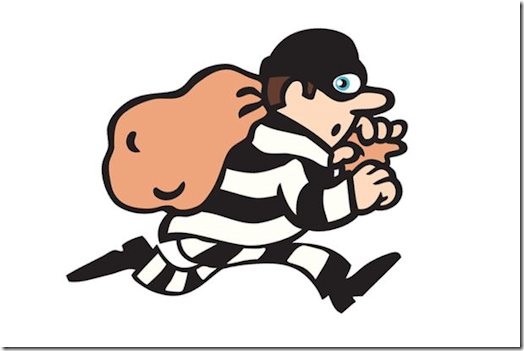 This article was originally published in 2013, but it’s been popular recently, so I have updated it. I’ve also written a more detailed explanation about
This article was originally published in 2013, but it’s been popular recently, so I have updated it. I’ve also written a more detailed explanation about 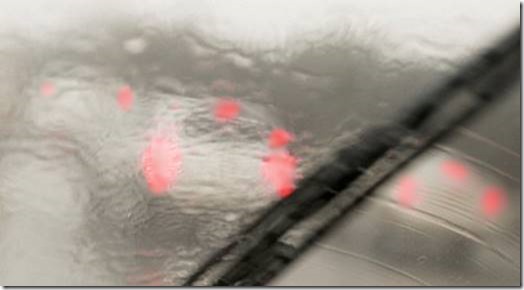

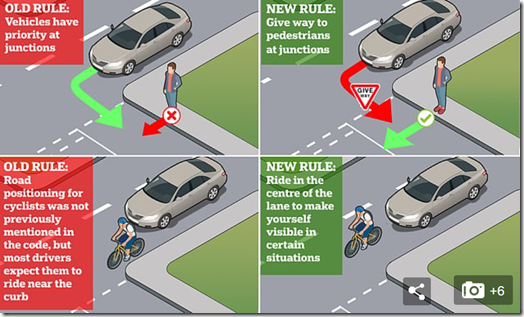
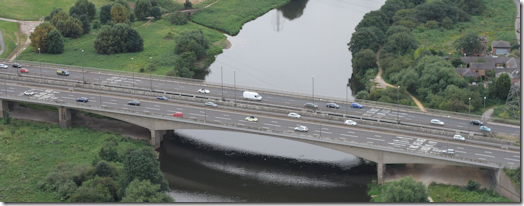 Bloody hell!
Bloody hell!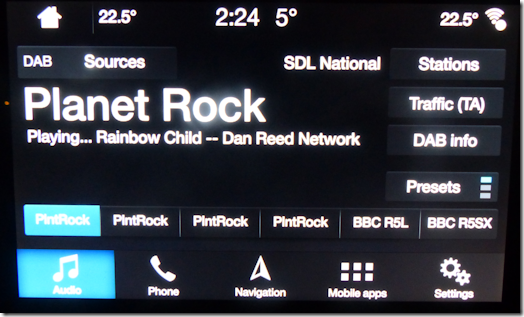 Since I got my new Ford Focus last year (2018), it has suffered from repeated random locking-up of the radio and navigation system. The only way to reset it once it happens has been to either leave the car and lock it for a few minutes, so it resets itself, or press and hold the OFF and Fast Forward buttons for about 8 seconds. Oh, and the radio has never remembered that I have set it to show additional information (the song that is playing, for example), meaning I have to turn that feature on manually every time I get in the car).
Since I got my new Ford Focus last year (2018), it has suffered from repeated random locking-up of the radio and navigation system. The only way to reset it once it happens has been to either leave the car and lock it for a few minutes, so it resets itself, or press and hold the OFF and Fast Forward buttons for about 8 seconds. Oh, and the radio has never remembered that I have set it to show additional information (the song that is playing, for example), meaning I have to turn that feature on manually every time I get in the car).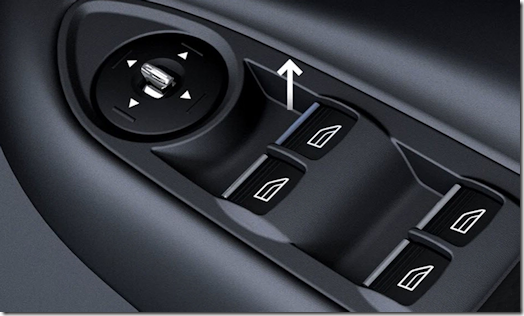 My Focus has one-touch electric windows. On my last car, shortly before it was due for a service, the driver-side window developed a fault whereby when it was closed and hit the top of the frame, it bounced half way back down. What I had to do was carefully inch it up and make sure it didn’t hit the top each night when I got home and locked it up. There was still a small gap, though, but it had a service booked and we had no rain, so it wasn’t an issue.
My Focus has one-touch electric windows. On my last car, shortly before it was due for a service, the driver-side window developed a fault whereby when it was closed and hit the top of the frame, it bounced half way back down. What I had to do was carefully inch it up and make sure it didn’t hit the top each night when I got home and locked it up. There was still a small gap, though, but it had a service booked and we had no rain, so it wasn’t an issue.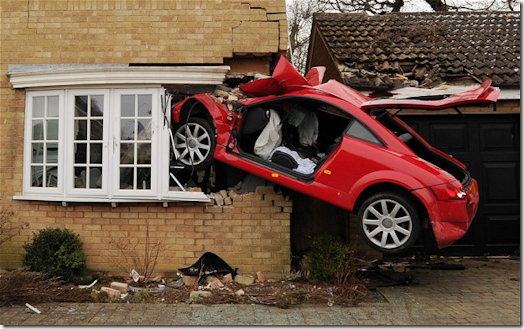 A DVSA alert came through yesterday informing us that they’re investigating the
A DVSA alert came through yesterday informing us that they’re investigating the